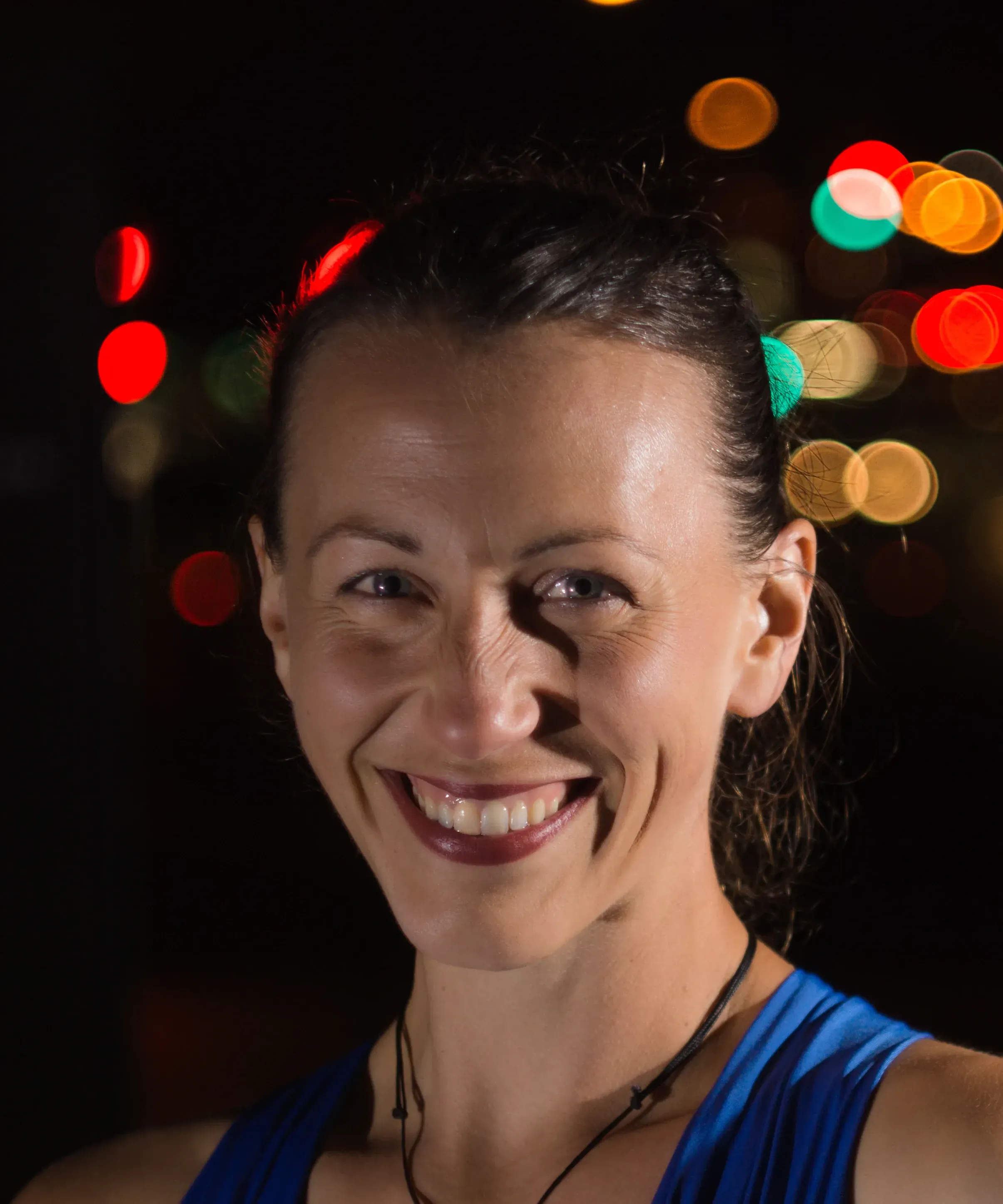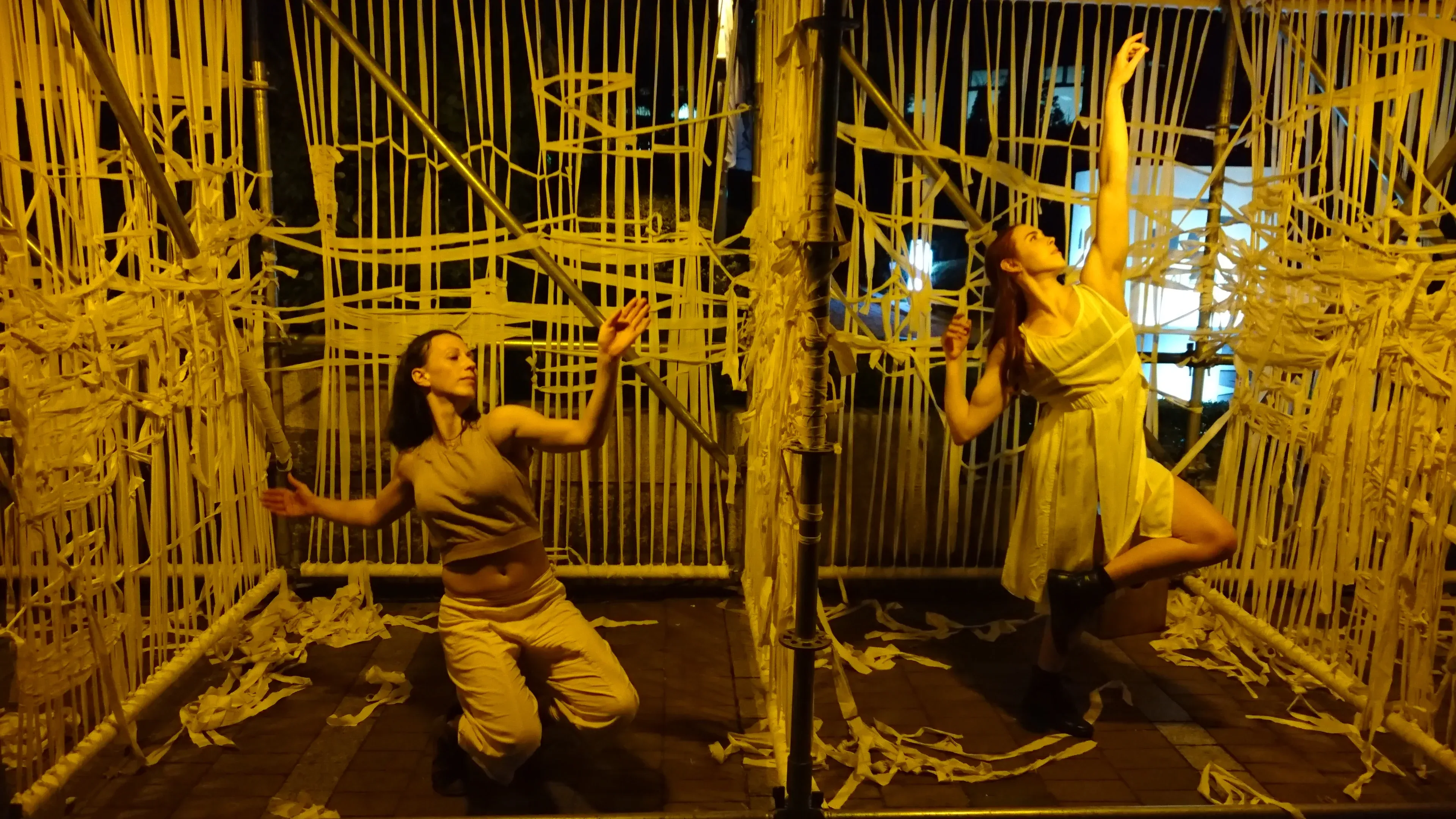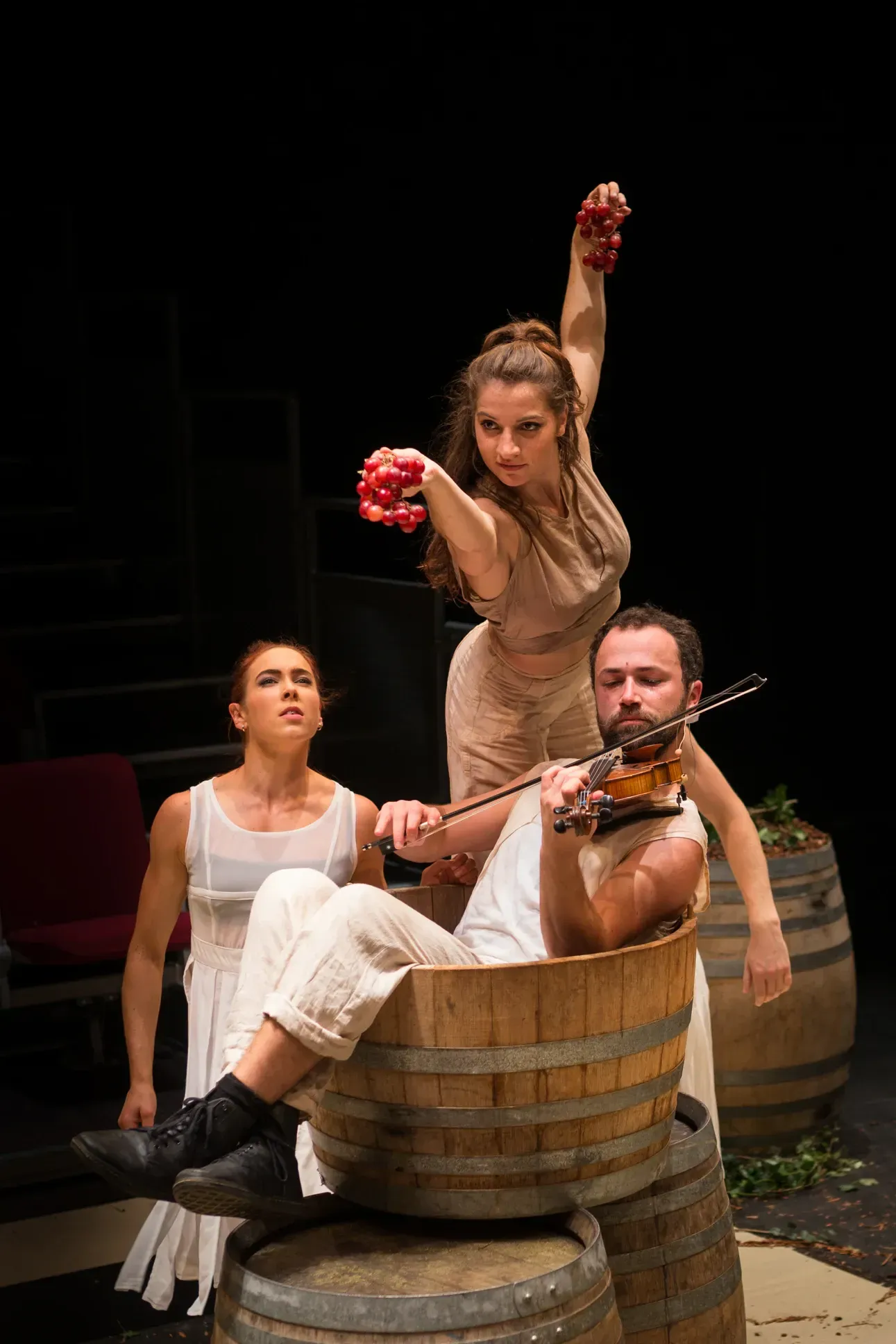Sacha Copland: Dissolving the Distance Between
Written by

Sacha Copland is a dancer, choreographer and the Artistic Director at Java Dance Theatre. She believes in the power of dance to build empathy and her works aim to permeate and dissolve the distance between people by creating dance that “clambers into your senses and gets underneath your fingernails.” Sacha talks to The Big Idea about how she has navigated a career in dance.
“Where something changes for someone and they tell you, and some guard drops away from their face, or something they’re holding onto tightly falls away, and you can see that for them something has changed or transformed, or something seems more possible or magical or fun. It could be a 5-year old or a 65-year old. Those are the moments when I know I’m getting it right.”
As a young girl, Sacha could be found running around the paddocks dancing and making up imaginary worlds with her siblings. She started attending ballet class at the age of seven because her best friend was going and this began what has been a lifetime commitment to dance and choreography. “I feel like I always wanted to be a dancer. I don’t remember a time when I didn’t want to dance.” Although ballet is where she cut her teeth as a dancer, it was not a form that came naturally to her. “I don’t have the right body for ballet. I don’t have flat turn out. I’m not naturally flexible. I have some curves.” These were limitations that even as a youngster she was determined to overcome. “I worked really hard. I just kept practicing, and I had to stretch incessantly.” Throughout her days as a young dancer she was never cast for the main character roles that all young dancers strive to be picked for, and consistently found herself in the role of the baddie or the dark character. She found freedom in the impromptu side of ballet, where you get to improvise, and this was the area where she excelled.
The challenges in these early days taught Sacha that it is a trap if you are naturally good at everything because you don’t learn resilience in the face of failure. “Ballet taught me how to deal with failure and that has been the most useful thing for my career … If you’re always successful you don’t learn to deal with failure, and in the arts no one is always successful. It’s a hard industry to stay in. Funding is so competitive. Jobs are so competitive. Audiences are so up and down. So many factors are unpredictable. You need to be able to take both failure and success in your stride so you can survive the ups and downs.”
After graduating from the New Zealand School of Dance, Sacha started a dance co-op, Java Dance, with two other graduates, Rosanne Chirstie and Yasmine Ganley. “After I first graduated, I told myself, ‘you can do anything, but it has to be dance related in the first year.’” Those early days were run on a shoestring and they organised their lives around being able to choreograph and dance. “Because people weren’t being paid, we had to make it as possible for everyone as we could.” The team would dance from 9am to 3pm, and then would all go to their own jobs often until 9pm at night. Sacha taught dance for six or seven hours in the evenings which gave them access to the studio space for free during the days. In those early years, they worked on a philosophy that a show could only ever be as large as what could fit inside her toyota corolla. People would sew their own costumes, they would make the props, they all equally shared the risks involved and they only ever got paid box office splits. Sacha remembers the first time they were properly paid, two years into creating and producing works.
The thing that changed everything for the Java Dance crew was when they started schools touring. They would offer a performance and workshop package to schools around the country. Dance Aotearoa New Zealand (DANZ) offered them a lot of support to set up their first tour. “There is so much about schools touring that contributed to the company,” says Sacha. They would perform for between one to three months at a time to diverse audiences across the whole country, learning as they went how to understand and respond to the two most honest and discerning audiences that exist, 5 year olds and teenagers. Sacha found that doing such sustained performances (rather than just a short season) taught her so much. She was pushed to perform for prolonged periods of time, and as a choreographer she learned a lot about how to make works that engage people, that connect.
Over time, as people have moved on to other careers, the ownership model has shifted organically to reach where it is now, Java Dance Theatre with Sacha as the Artistic Director. “I like the idea of a co-op but that implies that work is shared equally and that never happens in reality. I don’t think anyone else wants the weight of it.” As director, Sacha is the main driver behind producing works, and she has created a framework where she engages dancers and composers to be part of the creation process of new shows and perform the works. She tries to maintain consistency of the dancers and musicians across her works and prioritises the values of generosity and imagination in her colleagues. She has developed a clear framework where those who work with Java Dance know that their role is to create, to perform and that they will be paid for their work. The rest, Sacha takes care of.
When reflecting on her role in the company, Sacha has found that embodying the dual roles of director and choreographer can create internal conflict. As a director she needs to be practical and efficient and make things work. As a choreographer she needs to push boundaries and sit solely within creativity. In 2011, she decided to stop being practical and let the inner choreographer win. She consciously avoided the limitations of practicality and released her creativity to go as wild as it wanted to. The result, was a show called Rise, where during the performance 40kg of flour fell from the ceiling onto the stage and was then mixed with water and golden syrup that the audience was invited to knead. The challenging side of embracing the impractical meant that she was never able to tour Rise outside of Wellington. The beauty, was that she had created her favourite piece of work. Rise became the first in what is now called The Artisan Series, a collection of five works that follow the path of human civilisation. Since Rise, she has gone on to produce, tour and take to the Edinburgh Fringe Festival the second in the series, The Wine Project, and is currently in the creation process for number three, The Creamery.
On a personal level, dance has taught Sacha a lot about herself. Through her own experience dancing, Sacha has learned that it is impossible to be really connected to your body and remain closed. “There’s a certain kind of repression or guardedness that can’t exist if you’re connected to your body.” This became particularly apparent to her when she was doing a solo residency in France. She found, through her daily dance practice, that the more connected she became to her body, the more honest her work became. This can be both a blessing and a curse. “When creating choreography, sometimes you don’t want to be that honest, but it doesn’t leave you much choice.”
At a core level, Sacha has always felt discomfort when people remain at an awkward physical distance or have an impenetrable invisible barrier that keeps their real selves locked to their chests. She is driven by a curiosity, a desire to really know people. “Life is too short to miss the opportunity to actually connect.” This personal discomfort is something that, through dance, she has harnessed into a tool to build empathy. “Dance is about lessening the space between one person and another.” When people dance together, all social constructs fall away and they meet and connect in a way that is very real. They allow themselves to be vulnerable in the face of another. As Sacha explains, “It’s hard to stay closed to someone when you’re dancing with them.” This act alone builds empathy between individuals and Sacha is constantly harnessing this quality in her work, encouraging people who interact with her work to connect fully with themselves and with others. “I love things that get under people’s skin and go around people’s conscious thoughts. They don’t realise that their empathy is building but it is. That’s why I always try and build characters that you like even if they do bad things.”
Sacha’s goal has always been to make work that speaks to her audience and welcomes them into the sensory world that she has created for them. She sees herself has a host to her audience. However, in reality, she is more than a host, she is a provocateur, persuading her audience to crack open, to let the joy of dance permeate any invisible barriers and allow themselves to be entirely present in the world. “Where something changes for someone and they tell you, and some guard drops away from their face, or something they’re holding onto tightly falls away, and you can see that for them something has changed or transformed, or something seems more possible or magical or fun. It could be a 5-year old or a 65-year old. Those are the moments when I know I’m getting it right.”
For those wanting to pursue a career in dance, Sacha’s advice is “say yes to everything dance related at first.” She is honest about the fact that you have to put in the hard yards and live with a certain degree of uncertainty. It is easy to be “seduced by being needed” in a regular job. To avoid the seduction, she encourages people at the outset to “find something that is dance related, even if it’s totally unglamourous.” And at the end of it all, be prepared to fail. Sacha encourages others to “dive off the end and fail a lot … Be willing to fail and then be willing to transform that and laugh about it … The only way you can get good at making work is to make a lot of work and not all of it is going to be good. You have to practice in front of audiences, reviewers, your peers. And don’t get discouraged.”
Sacha's No. 1 tip for other artists
- If you are looking to get to know the Wellington performing arts community the Big Live Arts Group is a great place to start.
Coming up for Java Dance Theatre
- Performing Cheese on Saturday 13 May in Invercargill: https://southlandnz.com/events/java-dance-theatre-cheese
- Premiering The Creamery mid-year in Wellington: http://www.javadancecompany.co.nz/portfolios/the-creamery
- Performing Dirt and Other Delicious Ingredients at Auckland Live, 11-14 October: https://www.aucklandlive.co.nz/show/dirt-and-other-delicious-ingredients

